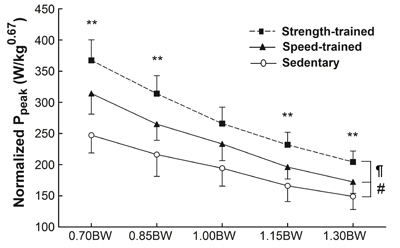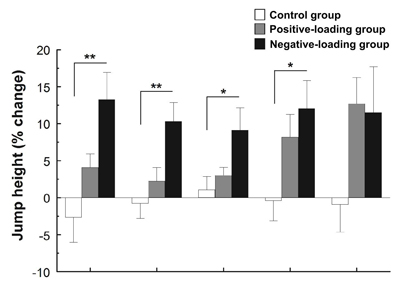Within this project we studied the relationship between the external loading and movement performance that could reveal the rules regarding producing the maximum output of the muscular system. Specifically, by testing the effects of external loads on various movement performances we intended to reveal conditions for maximum mechanical output of the muscular system. We also intended to explore adaptation processes associated with altered loading and physical activity in general. For this purpose, we designed a novel tool that allowed us to mimic the changes in gravity acceleration (either an increase or a decrease of gravity) while performing natural human movements.
The results obtained suggest that the muscular system of the lower limbs could be designed to produce the maximum power output against the loads that are well below the mass and inertia of the human body, regardless of the training history of the individuals.

Furthermore, our results suggest that the explosive-type training with negative loads (i.e., loads < than the subject’s body weight) could be more effective for improving the lower body power output and movement performance than the similar training with ‘no load’ (i.e., subject’s body weight only), or positive external loads (i.e., loads > than the subject’s body weight).

Finally, our results indicate that the actual placement of the load could be an important determinant of the maximum mechanical output of the human muscular system, suggesting differential effects of gravitational and inertial component of the load on muscle output during performance of rapid movements.
Overall, these findings contributed to our better understanding of the basic principles of both the design and function of the human muscular system, and they could be used for improving the theoretical framework for understanding and predicting transformational processes of the muscular system associated with various training and rehabilitation procedures. From the practical aspect, our findings could provide a basis for new approaches in assessment of muscular function. Specifically, an important implication could be that the optimally loaded maximum performance movements could be used for assessment of the power and force generating capacity of the muscular system. As a result, instead of using complex laboratory tests that usually require expensive equipment to assess the muscular force and power, the muscular function could be evaluated from relatively simple and 'ecological' tests of performance of rapid movements.
